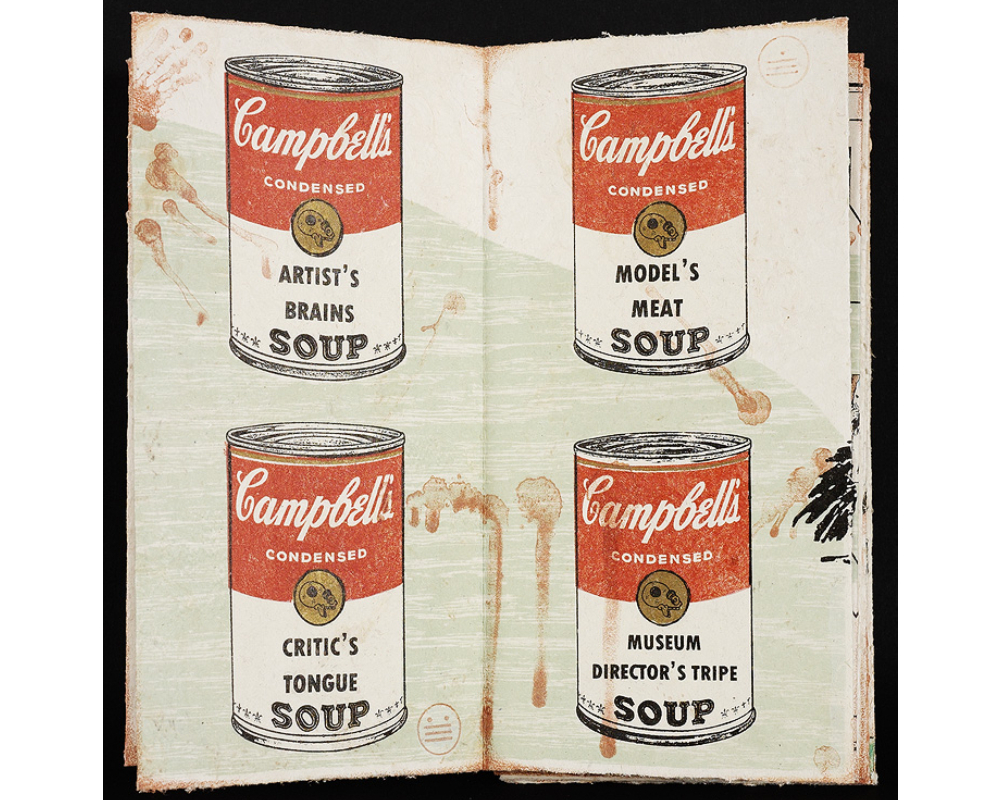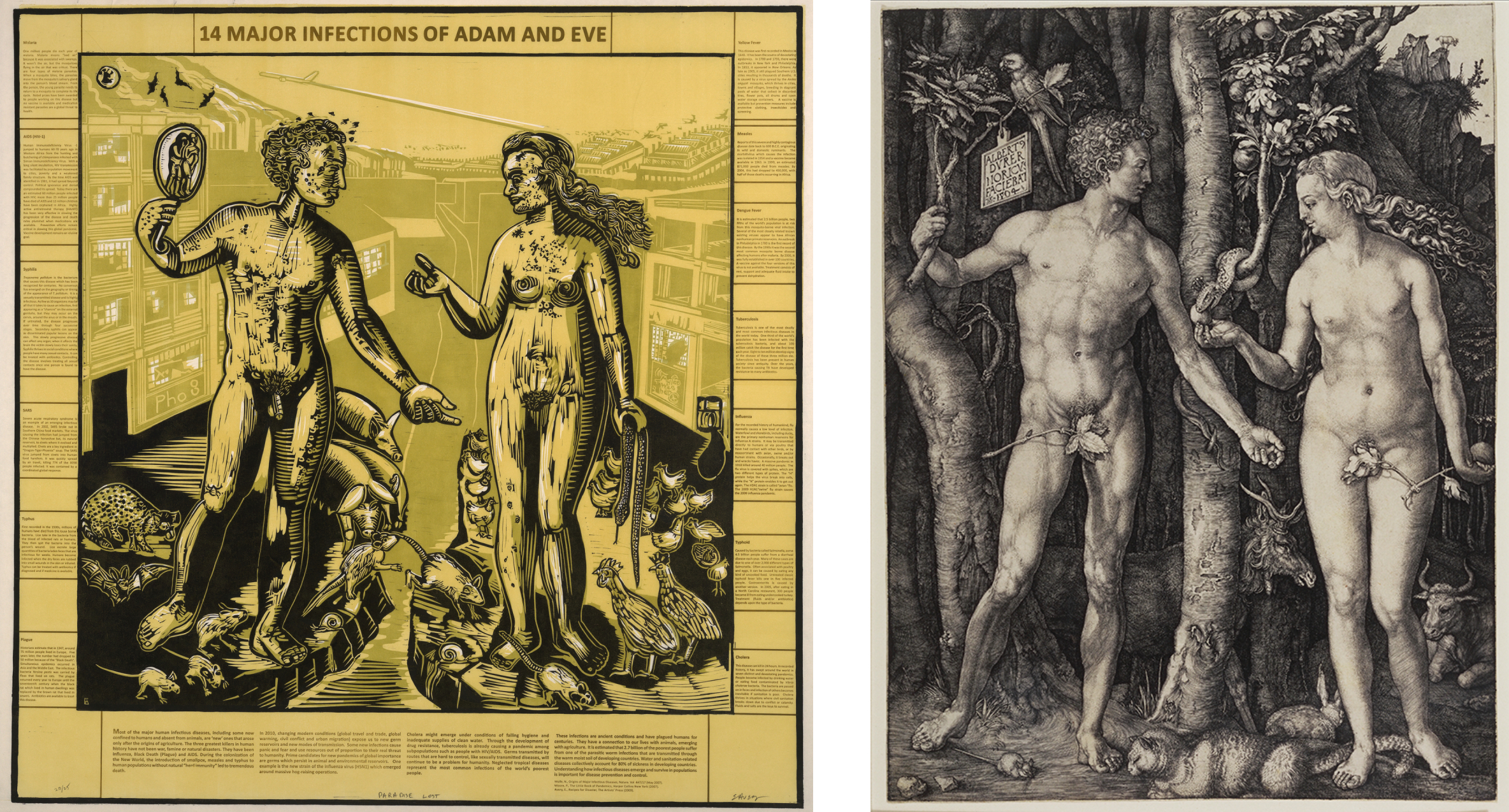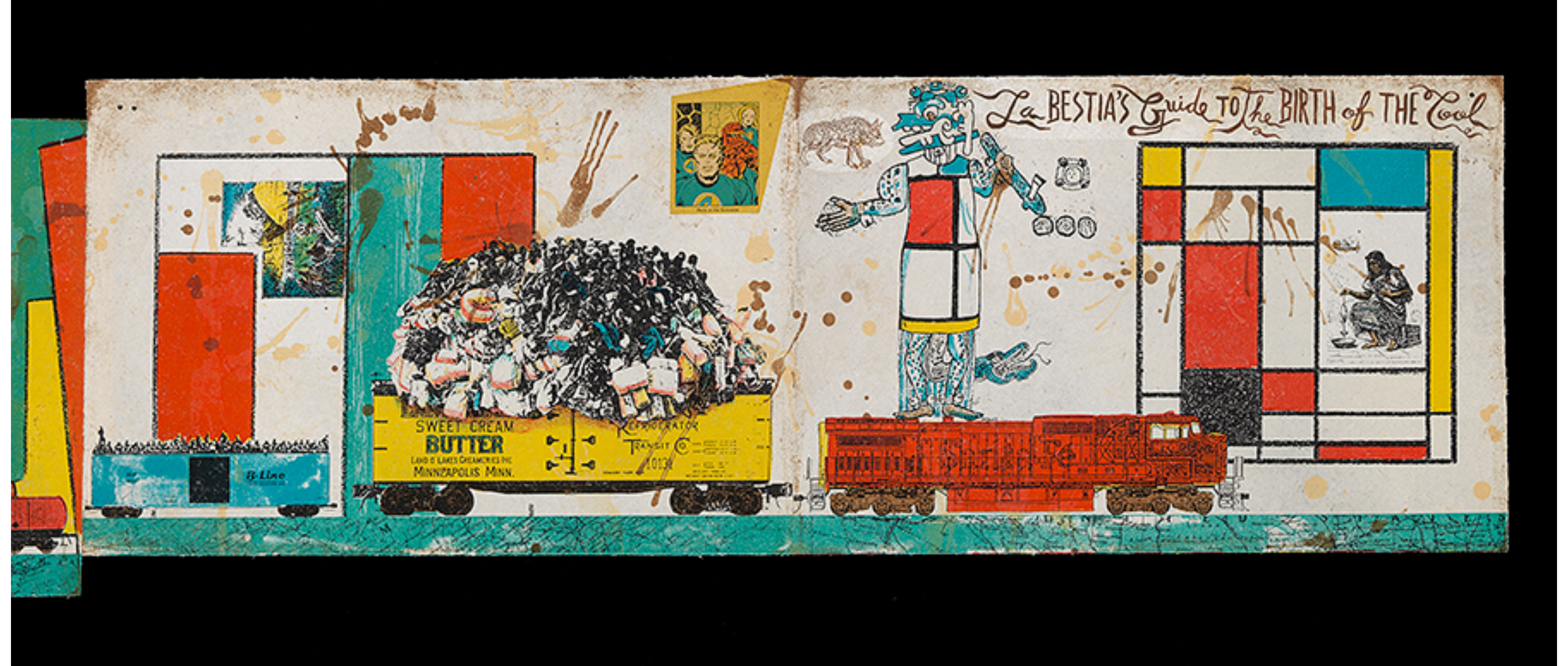
Hijacked Art, Continued.
Katie O'Hara is a recent alumna and current candidate for a Master’s in Art and Museum Studies at Georgetown University. She received a BA in History and Art History from Smith College this May, and was a Museums Concentrator and the Student Picks curator for February 2018. In this post, she revisits her Student Picks exhibition and elaborates on her curatorial methods. Katie created an immersive 360 view of her Student Picks installation, which can be found here.
There are certain works of art that do not require a degree in Art History to recognize that they are iconic. Famous works included in the Western canon find themselves in our daily lives as textbook covers or as posters in the waiting rooms of doctor’s offices. Famous images from Art History have permeated every aspect of visual culture.
This past semester I had the chance to create an exhibition that was about more than just the mere parody. Anyone can parody a work; these artists truly transform their inspirations, often turning them into activist symbols. In this exhibition, Hijacked Art, there are prints that echo American Gothic, Goya’s Los Caprichos, and Andy Warhol’s Campbell’s Soup Cans. Art is not created in a vacuum, as artists all have influences. This exhibition explores alternative representations of the Western canon in contemporary art. The exhibition title is drawn from the fact that the contemporary artists in this show have interpreted the work of deceased artists who cannot condemn or laud the appropriation of their work.One example is of Eric Avery’s Paradise Lost (right) and Dürer’s Adam and Eve (left), both in Smith’s collection.

Left: Eric Avery. American, born 1948. Paradise Lost, 2011. Linocut printed in three colors on Okawara paper with polymer plate text block printed in brown. Purchased through the efforts of students in the class “Collecting 101,” January 2012. SC 2012.14.
Right: Albrecht Dürer. German, 1471–1528. Adam and Eve, 1504. Engraving printed in black on antique laid paper. Bequest of Mr. and Mrs. Murray Seasongood (Agnes Senior, class of 1911). SC 1983.20.4.
Dr. Eric Avery is both a graphic artist and a physician. He became the Medical Director of the La Dhure refugee camp in Somalia where he began making art that dealt with issues of public health. When he returned to the United States the first case of AIDS had been recognized by the CDC. As an artist, gay man, and physician he was thrown into the center of the crisis.
Albrecht Dürer was a late fifteenth and early sixteenth century printmaker of the German Renaissance. He is credited for introducing classical motifs into the Northern Renaissance, making him an important art historical figure. Dürer fanatically believed that the perfect human form was based on a system of measurements and proportions. In his print, Adam and Eve are nearly symmetrical in their poses, showing Dürer’s attempt to divine God’s system. Dürer’s Adam and Eve place the weight on one leg with the other leg bent. They both angle their arm slightly upward from the elbow and away from the body. Their bodies show the grace of God’s image. Contrastingly, Dr. Avery’s Adam and Eve are visibly diseased, showing the vulnerability of the human body. Adam and Eve have been kicked out of Dürer’s paradise and thrown into a modern urban landscape, surrounded by descriptions of fourteen detrimental infections. The title Paradise Lost foretells the suffering to come for mankind.
Dürer was not the only artist that Avery referenced in his work. Dr. Avery’s The Sleep of Reason From Behind references the second most famous work in this exhibition, Francisco de Goya’s The Sleep of Reason Produces Monsters (displayed on the right). This is perhaps one Goya’s most recognizable works.

Left: Eric Avery. American, born 1948. The Sleep of Reason from Behind, 1986. Linocut and screenprint printed in black and grey on medium thick, slightly textured, buff-colored paper. Purchased with the Eva Nair Fund. SC 2017.3.
Right: Francisco José de Goya y Lucientes. Spanish, 1746–1828. El sueño de la razón produce monstruos (The sleep of reason produces monsters), Plate 43, Los Caprichos, 1799. Etching, burnished aquatint and drypoint printed in black on laid paper. Purchased with the gift of Albert H. Gordon. SC 1964.34.43.
The Sleep of Reason Produces Monsters is a print from Goya’s Los Caprichos. This series satirized society and highlighted how commonplace brutality can be. The prints were seized and the Jesuit order vowed to destroy them. However, as Goya was a favorite painter of the king, they were instead taken out of circulation. In this print, Goya depicts bats and owls swarming in from all sides while a lynx lays quiet, but wide-eyed and vigilant. Over the man’s back, there is another creature that stares at us. The monster knows that we are a voyeur and threatens us to not get involved. Many of Goya’s prints including Los Caprichos and The Disasters of War dealt with Goya’s exhaustion with senseless, anti-enlightenment violence. Like Goya, Avery has witnessed a fair share of violence: Avery worked with Amnesty International to treat victims of war and torture from Central America who were detained in a refugee prison in Southern Texas. Avery stated: “In 1986, I appropriated Goya’s The Sleep of Reason to make a poster for the 15th ACLU Liberty Gala. I imagined myself standing inside Goya’s print, looking out at events (monsters) in 1986.”
The re-interpretation of the “back side” of the print is not just to give the viewer an interesting perspective. It shows us the type of things that faced Goya’s man. Goya’s man was not just surrounded by monsters from behind but was bombarded by the bad news of the times from the front. When considering the perspective of both prints, we ourselves are the bearers of bad news. Where Goya may have put his The Disasters of War series in front of the sleeping man, Avery shows the horror of our time. On the upper right corner, you can see Ronald Reagan swimming. Clockwise underneath is a New York Times headline about the Supreme Court banning homosexual acts and abortion protest. In the lower left, he represents an En Salvador military officer. Above that, Reagan is at his desk with Ed Meese, Reagan’s Chief of Staff and later Attorney General, who cracked down on student protesting. In the upper left there is a Border Patrolman wearing night vision goggles, which were a new tool that was issued under the Reagan administration. Lastly, at the center, Nancy Reagan and Claudette Colbert play on the beach, completely oblivious to the suffering around them.
I was inspired to create this show after discovering the work of Enrique Chagoya, who practices what he calls “utopian cannibalism” and “reverse anthropology.” Chagoya flips the lens on European artists who appropriate sculptural and artistic forms from African and Pre-Columbian cultures. He “cannibalizes” works from the Western canon to critique European and American appropriation and misrepresentation of indigenous communities.

Enrique Chagoya. American, born in Mexico in 1953. La Bestia’s Guide to the Birth of the Cool, 2014. Ten color lithograph with chine colle and gold metallic powder on handmade Amate paper; accordion book format. Purchased with the Elizabeth Halsey Dock, class of 1933, Fund. SC 2015.1.
Enrique Chagoya’s La Bestia’s Guide to the Birth of the Cool is the twelfth in a series of codices made at Shark’s Ink. This codex was created as a direct response to xenophobic reactions to the border crossing of unaccompanied children from Guatemala, El Salvador, and Honduras. A train known as La Bestia travels from Southern Mexico to the Texas border. Chagoya uses Mondrian’s compositions in his work to show that immigrants should be welcomed in American culture, particularly considering “this country was created not just by immigration, but rather by illegal immigration, from the Pilgrims and Conquistadors to the recent immigrants from the Americas, Africa and Asia.” He claims that this book shows that diversity results in a wealth of culture, not a threat. Together, these prints show how artists can simultaneously reference iconic works and acknowledge the systems of oppression and repression they are tied to.